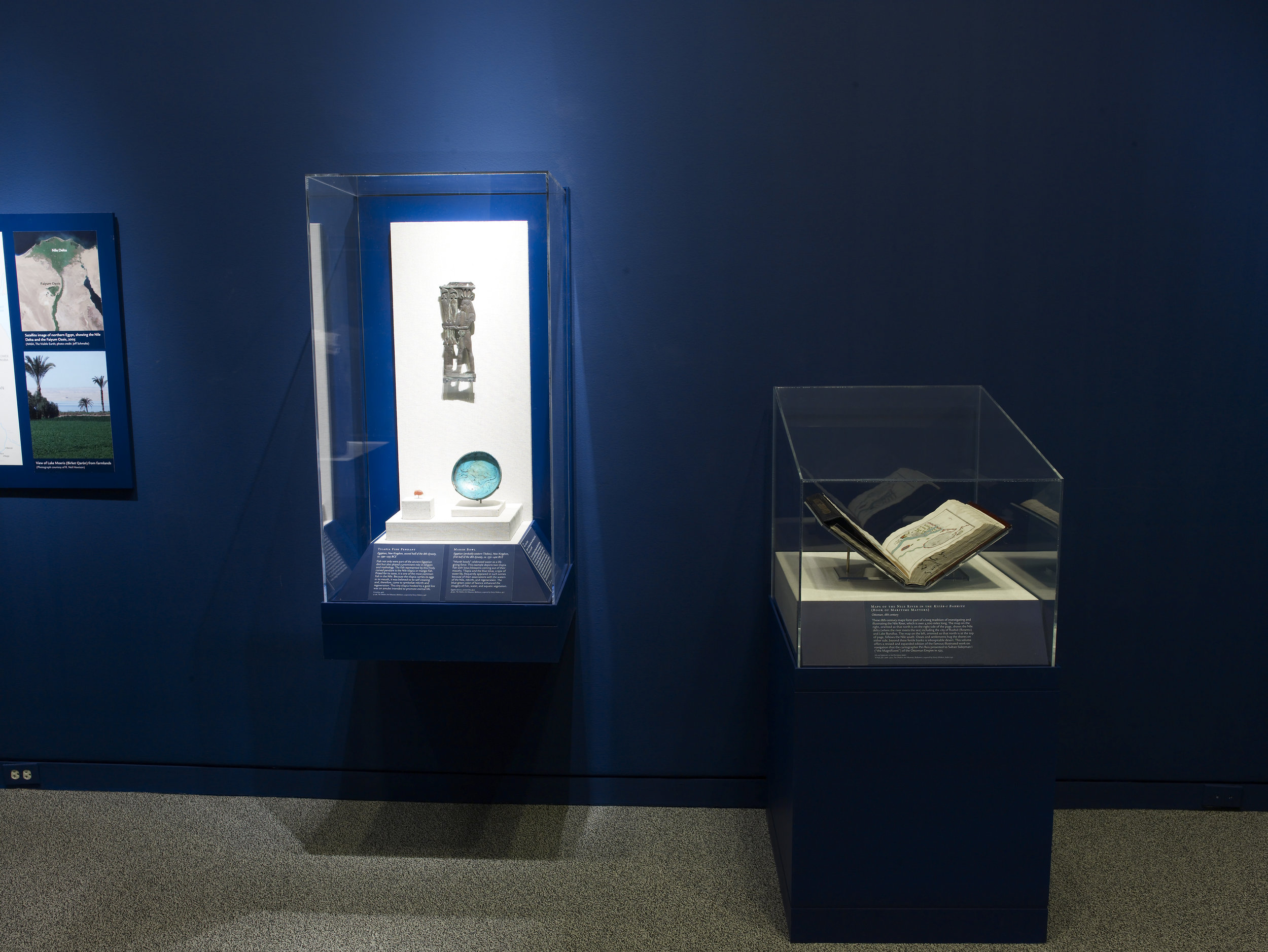EGYPT'S MYSTERIOUS BOOK OF THE FAIYUM
Walter's Art Museum
Baltimore, MD
thewalters.org/exhibitions/faiyum
My Role: Primary duties - case layouts and construction drawings; additional tasks – interactive prototyping and design development.
The Book of the Faiyum is an exquisitely illustrated ancient papyrus depicting Egypt’s Faiyum oasis, a center of prosperity and ritual during the Greco-Roman period. Major sections of the manuscript —reunited for the first time in 150 years —were displayed alongside Egyptian statues, reliefs, jewelry, and ritual objects to illuminate the religious context that gave rise to the enigmatic tale of Sobek, the crocodile god who brings sun to the Faiyum.
Egypt's Mysterious Book of the Faiyum offered a new look at ancient Egypt. It went beyond the usual exhibition subject matter of mummies and tombs, preparations for the afterlife, and the famous pharaohs by exploring ancient Egyptian artistry, mythology, and religious iconography. Additionally, the exhibition focused on a period thousands of years after the Pyramids at Giza or Tutankhamun’s rule as the Book of the Faiyum dates to some time between the late 1st century BCE and the second century CE, when the Romans ruled Egypt. The exhibition centered on the Faiyum, an oasis in the desert to the West of the Nile.
Egypt’s Mysterious Book of the Faiyum displayed approximately 80 works of ancient Egyptian art, including statues, reliefs, parts of coffins, papyri, and jewelry. Moving through the galleries, as if traversing the lake or walking through the narrative of the book itself, visitors encountered works of art that portrayed the divine figures illustrated in the book. The exhibition encouraged reflection on the mysteries surrounding the Book of the Faiyum, including why it was made and for whom.
October 2013 - January 2014
All Photos: Walter's Art Museum


















